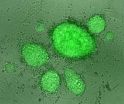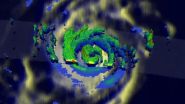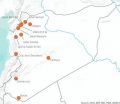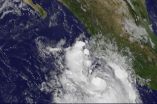(Press-News.org) Cold Spring Harbor, NY – Life is a series of decisions, ranging from the mundane to the monumental. And each decision is a gamble, carrying with it the chance to second-guess. Did I make the right turn at that light? Did I choose the right college? Was this the right job for me?
Our desire to persist along a chosen path is almost entirely determined by our confidence in the decision: when you are confident that your choice is correct, you are willing to stick it out for a lot longer.
Confidence determines much of our path through life, but what is it? Most people would describe it as an emotion or a feeling. In contrast, scientists at Cold Spring Harbor Laboratory (CSHL) have found that confidence is actually a measureable quantity, and not reserved just for humans. The team, led by CSHL Associate Professor Adam Kepecs, has identified a brain region in rats whose function is required to for the animals to express confidence in their decisions.
How do we know when a rat is exhibiting confidence? The researchers devised a method to study decision making in these animals. The rats were offered an odor that they were trained to associate with one of two doors. When they chose the correct door, they were rewarded. This part was easy for the animals: their selections were almost always correct.¬¬ Things got trickier when Kepecs and his team offered a mixture of the two scents, with one dominating over the other by only a very small percentage. The rats now needed to choose the door representing the dominant odor in order to get their reward – a choice that reflects their best guess.
In work published today in Neuron, the team describes how confidence can be measured simply by challenging a rat to wait for the reward to be revealed behind the door. The time they are willing wait serves as a measure of the confidence in their original decision. "We found that the rats are willing to 'gamble' with their time," Kepecs explains, sometimes waiting as much as 15 seconds, which is an eternity for these animals. "This is something that we can measure and create mathematical models to explain," says Kepecs. "The time rats are willing to wait predicts the likelihood of correct decisions and provides an objective measure tracking the feeling of confidence."
The researchers hypothesized that a distinct region of the brain might control confidence. Previous work has suggested that the orbitofrontal cortex (OFC), a part of the brain involved in making predictions, might have a role in decision confidence. Kepecs and his team specifically shut off neurons in the OFC, inactivating it, and found that rats no longer exhibited appropriate levels of confidence in their decisions.
"With an inactive OFC, the rats retained the ability to make decisions – their accuracy did not change," says Kepecs. "And they spent the same amount of time waiting for a reward on average. The only difference is that animals' willingness to wait for a reward was no longer guided by confidence. They would often wait a long time even when they were wrong."
The discovery offers a rare glimpse into the neuronal basis of a higher-level cognitive process, and is likely to have implications in human decision-making as well. As Kepecs describes, "we now know that the OFC is critical for making on-the-fly predictions in rats. The human OFC is just a more sophisticated version of the rodent counterpart." The team is expanding their research to explore how the elusive feelings of confidence are based on objective predictions that influence human decisions as well.
INFORMATION:
This work was supported by grants from the Klingenstein, Alfred P. Sloan and Whitehall Foundations and the US National Institutes of Health, as well as a grant from Fundação para a Ciência e a Tecnologia as part of the BEB/CNC PhD programme.
"Orbitofrontal cortex is required for optimal waiting based on decision confidence" appears online in Neuron on Date. The authors are: Armin Lak, Gil M. Costa, Erin Romberg, Alex Koulakov, Zachary F. Mainen and Adam Kepecs The paper can be obtained online at: http://www.cell.com/neuron/home
About Cold Spring Harbor Laboratory Founded in 1890, Cold Spring Harbor Laboratory (CSHL) has shaped contemporary biomedical research and education with programs in cancer, neuroscience, plant biology and quantitative biology. CSHL is ranked number one in the world by Thomson Reuters for the impact of its research in molecular biology and genetics. The Laboratory has been home to eight Nobel Prize winners. Today, CSHL's multidisciplinary scientific community is more than 600 researchers and technicians strong and its Meetings & Courses program hosts more than 12,000 scientists from around the world each year to its Long Island campus and its China center. For more information, visit http://www.cshl.edu.
Gambling with confidence: Are you sure about that?
Scientists uncover the neural basis of confidence in the rat brain
2014-09-18
ELSE PRESS RELEASES FROM THIS DATE:
Stem cells use 'first aid kits' to repair damage
2014-09-18
Stem cells hold great promise as a means of repairing cells in conditions such as multiple sclerosis, stroke or injuries of the spinal cord because they have the ability to develop into almost any cell type. Now, new research shows that stem cell therapy can also work through a mechanism other than cell replacement.
In a study published today in Molecular Cell, a team of researchers led by the University of Cambridge has shown that stem cells "communicate" with cells by transferring molecules via fluid filled bags called vesicles, helping other cells to modify the damaging ...
NYU Langone scientists report reliable and highly efficient method for making stem cells
2014-09-18
NEW YORK, September 18, 2014 – Scientists at NYU Langone Medical Center have found a way to boost dramatically the efficiency of the process for turning adult cells into so-called pluripotent stem cells by combining three well-known compounds, including vitamin C. Using the new technique in mice, the researchers increased the number of stem cells obtained from adult skin cells by more than 20-fold compared with the standard method. They say their technique is efficient and reliable, and thus should generally accelerate research aimed at using stem cells to generate virtually ...
The war on leukemia: How the battle for cell production could be decisive
2014-09-18
A key step in understanding the nature of the fight for superiority between mutated genes and normal genes could lead to new therapies to combat leukaemia, say researchers from the University of Birmingham and Newcastle University.
The study, published in Cell Reports, investigated Acute Myeloid Leukaemia to understand why leukemic cells are not able to develop normally into mature blood cells.
Stem cells in the bone marrow generate billions of different blood cells each day. The process resembles a production line with genes acting as regulators to control each step ...
NASA sees Hurricane Edouard enter cooler waters
2014-09-18
VIDEO:
On Sept. 17 at 03:39 UTC, the TRMM satellite saw a newer outer eyewall forming around Edouard's original eyewall creating a double eye-wall structure. Red indicates heavy rainfall....
Click here for more information.
NASA's Tropical Rainfall Measuring Mission or TRMM satellite and Aqua satellite gathered data on Hurricane Edouard's rainfall, clouds and waning power is it continued moving northward in the Atlantic into cooler waters. On Sept. 18, NASA's Global Hawk #872 ...
Scientists find how mysterious 'circular RNA' is formed, claim muscular dystrophy link
2014-09-18
Our genetic information is stored in DNA, tiny strands of nucleic acid that contain instructions for the functioning of our bodies. To express this genetic data, our DNA is copied into RNA molecules, which then translate the instructions into proteins that perform tasks in our cells.
Several years ago, scientists discovered a new type of RNA molecule. Unlike all other known RNAs, this molecule is circular, and was labeled circular RNA. Although circRNA molecules are abundant, little has been known about how they are produced. Moreover, little has been known about the ...
Flu vaccine for expectant moms a top priority
2014-09-18
WHITE PLAINS, NY, SEPT. 18, 2014 -- Only about half of all pregnant women in the U.S. get a flu shot each season, leaving thousands of moms-to-be and their babies at increased risk of serious illness.
"Getting a flu shot should be a routine part of prenatal care," said Edward McCabe, MD, March of Dimes chief medical officer. "Health care providers should offer their pregnant patients a flu shot each year and if they don't, then women should ask for it."
A report by the U.S. Centers for Disease Control and prevention presented today by the National Foundation for ...
New high-resolution satellite image analysis: 5 of 6 Syrian World Heritage sites 'exhibit significant damage'
2014-09-18
SEPTEMBER 18 —In war-torn Syria, five of six World Heritage sites now "exhibit significant damage" and some structures have been "reduced to rubble," according to new high-resolution satellite image analysis by the nonprofit, nonpartisan American Association for the Advancement of Science (AAAS).
The AAAS analysis, offering the first comprehensive look at the extent of damage to Syria's priceless cultural heritage sites, was completed in partnership with the University of Pennsylvania Museum of Archaeology and Anthropology's Penn Cultural Heritage Center (PennCHC) and ...
NASA marks Polo for a hurricane
2014-09-18
Hurricane Polo still appears rounded in imagery from NOAA's GOES-West satellite, but forecasters at the National Hurricane Center expect that to change.
NOAA's GOES-West satellite captured data on Hurricane Polo on Sept. 18 at 10:15 a.m. EDT. An image using that data was created by the NASA/NOAA GOES Project at NASA's Goddard Space Flight Center in Greenbelt, Maryland. The image showed thunderstorms wrapping tightly around the center of the storm while one broken band of thunderstorms extended to the northwest, while the other appeared on the eastern side of the center ...
New Dartmouth smartphone app reveals users' mental health, performance, behavior
2014-09-18
Dartmouth researchers and their colleagues have built the first smartphone app that automatically reveals students' mental health, academic performance and behavioral trends. In other words, your smartphone knows your state of mind -- even if you don't -- and how that affects you.
The StudentLife app, which compares students' happiness, stress, depression and loneliness to their academic performance, also may be used in the general population – for example, to monitor mental health, trigger intervention and improve productivity in workplace employees.
"The StudentLife ...
Fall foliage season may be later, but longer on warmer Earth
2014-09-18
The fall foliage season that prompts millions of Americans to undertake jaunts into the countryside each year could come much later and possibly last a little longer within a century, according to new research.
Climate change could postpone fall leaf peeping in some areas of the United States as summer temperatures linger later into the year, Princeton University researchers report in the journal Global Ecology and Biogeography. For instance, the paper birch — a popular foliage tree that is the state tree of New Hampshire — could change color one to three weeks later ...
LAST 30 PRESS RELEASES:
Critical minerals recovery from electronic waste
The move by Apple Memories to block potentially upsetting content illustrates Big Tech’s reach and limits, writes Chrys Vilvang
Chemical tool illuminates pathways used by dopamine, opioids and other neuronal signals
Asian monsoon lofts ozone-depleting substances to stratosphere
PET scans reveal ‘smoldering’ inflammation in patients with multiple sclerosis
Genetics predict type 2 diabetes risk and disparities in childhood cancer survivors
Health information on TikTok: The good, the bad and the ugly
New study points to racial and social barriers that block treatment for multiple myeloma
Rensselaer researcher finds that frog species evolved rapidly in response to road salts
A new chapter in quantum vortices: Customizing electron vortex beams
Don’t be a stranger – study finds rekindling old friendships as scary as making new ones
There’s no ‘one size fits all’ when it comes to addressing men’s health issues globally
Comparison of the “late catch-up” phenomenon between BuMA Supreme and XIENCE stents through serial optical coherence tomography at 1–2 month and 2 year follow-ups: A multicenter study
Marine plankton communities changed long before extinctions
Research reveals tools to make STEM degrees more affordable
Q&A: UW research shows neural connection between learning a second language and learning to code
Keane wins 2024 Gopal K. Shenoy Excellence in Beamline Science Award
Livestock abortion surveillance could protect livelihoods and detect emerging global pathogens
Optimal timing maximises Paxlovid benefits for treating COVID-19
IU researchers receive $4.8 million grant to study the role of misfolded protein TDP-43 in neurodegenerative diseases
DOE’s Office of Science Graduate Student Research Program selects 86 outstanding US graduate students
This tiny chip can safeguard user data while enabling efficient computing on a smartphone
World’s chocolate supply threatened by devastating virus
Wake up and die: Human brain neurons re-entering the cell cycle age quickly shift to senescence
Phage therapy is being explored to treat multidrug-resistant bacterial infections, but what are the direct effects of phages on the human host?
Social media use linked to tobacco initiation among youth
Marginalized communities developed 'disaster subculture' when living through extreme climate events, study finds
AGS honors Dr. William Hall with prestigious Nascher/Manning Award in Geriatrics
Human Frontier Science Program: life science research addressing sustainability of living systems
Wind turbine blades get a sustainable upgrade
[Press-News.org] Gambling with confidence: Are you sure about that?Scientists uncover the neural basis of confidence in the rat brain





